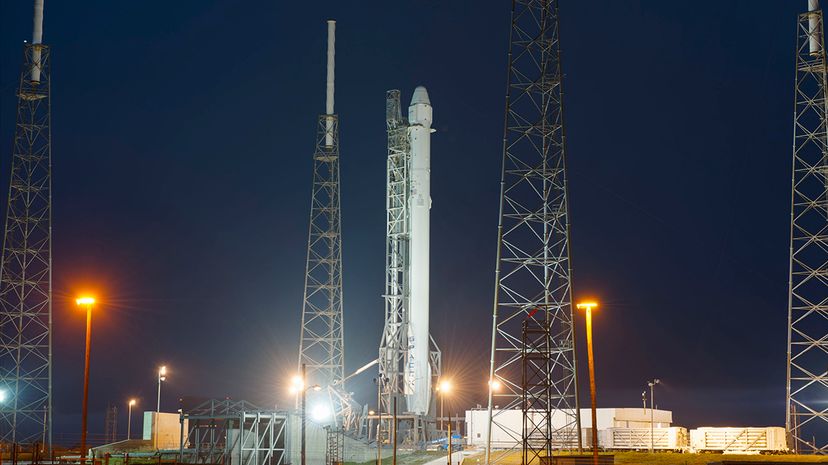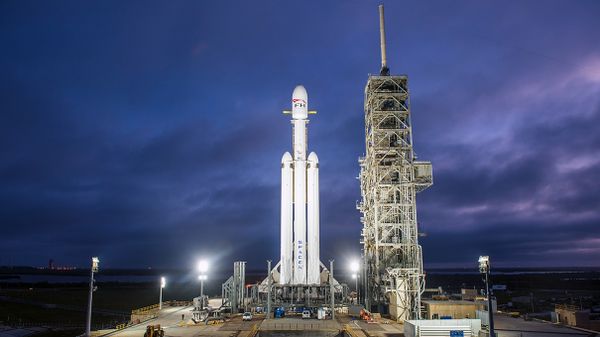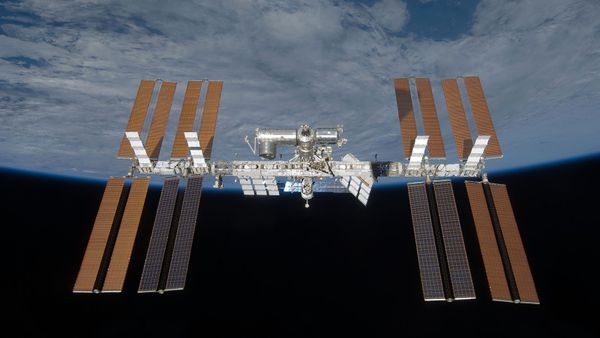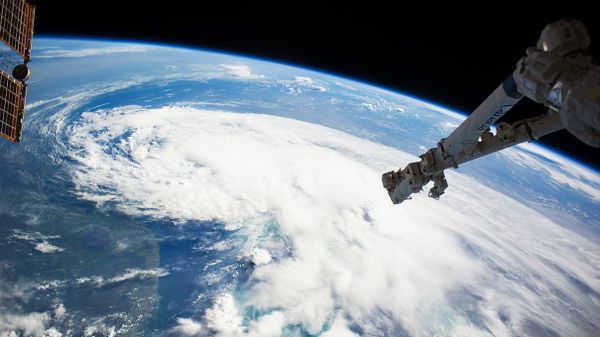
Commercial space service SpaceX's Dragon spacecraft is scheduled to make its14th commercial resupply missionto theInternational Space Stationon behalf of NASA. The Dragon will be atop a Falcon 9 rocket and is scheduled for liftoff from Cape Canaveral Air Force Station in Florida no later than 4:30 p.m. Eastern time on Monday April 2, 2018, delivering a payload of 5,800 pounds (2,630 kilograms) of supplies, equipment and scientific research to the ISS crew.
Some of that cargo will facilitate scientific research on a dizzying array of subjects, ranging from the effects of severe thunderstorms on Earth to growing vegetables in space. It also will help the space station's crew to test new materials and industrial processes in the harsh environment of space, and to evaluate a new medical technology for healing battlefield wounds.
Advertisement
Here are a few of the experiments being delivered by the mission:
- Growing veggies in orbit:The resupply mission will enable ongoing research on growing food such as tomatoes, cabbage and lettuce in space. TheVeggie Passive Orbital Nutrient Delivery System, an experiment will study a new way to deliver nutrients to plants. Tupperware, a manufacturer that's more familiar as maker of those handy containers you store leftovers in, and Techshot, a space hardware company has been involved in development of the system.
- Metal powder fabrication:Another experiment being transported on this flight will allow astronauts to study a process known asliquid-phase sintering. NASA compares it tobuilding a sand castle on the beachwith sand that's just wet enough to stick together but instead of sand, liquid phase sintering uses metal powders. On Earth, sintering has applications in making automobile engine connecting rods and lubricating bearings. But the ISS crew will be looking at how the process works in the microgravity of space, with an eye to someday using it to erect buildings for a月球基地or manufacturing replacement parts for space vehicles and equipment during extraterrestrial exploration missions.

- Investigating thunderstorms from above:The SpaceX flight will deliver equipment for theAtmosphere-Space Interactions Monitor, an orbital observatory that will study severe thunderstorms and their role in the Earth's atmosphere and climate. From its vantage point in orbit, ASIM will gaze down upon exotic phenomena such assprites, those mysterious bright flashes that occur in themesosphere,a region about 31 to 53 miles (50 to 85 kilometers) above Earth's surface. ASIM also will observe blue jetlightning, which shoot upward as far as 12 miles (19 kilometers) into the sky from the top of a thunderstorm cloud, and elves, which are donut-shaped light flashes that span for miles.
- How well materials work in space:If you're going to send a satellite or a spacecraft into the cosmos, you want to know in advance whether the stuff that it's made of will survive the harsh environment of space. The材料S Experiment Flight Facilitywill do just that. It's designed to test how well coatings and other components perform when exposed to the high levels ofradiation, heat and cold, bombardment with charged particles and even collisions with micro-meteoroids in orbit.
- Drug research:Just because a drug has a certain effect when taken on Earth, that doesn't mean that it will work the same way in space. This experimental project has an unwieldy moniker,Comparative Real-time Metabolic Activity Tracking for Improved Therapeutic Assessment Screening Panels, but the idea behind it is a lot simpler. Metabolic Tracking, as it's known for short, will allow the crew of ISS to study the effects of microgravity on the metabolic effect of five different pharmaceuticals.
- Fixing wounds:On battlefields back on Earth, there's a continual struggle to find ways to keep soldiers alive after they suffer increasingly horrific wounds caused by today's high-tech killing technology, or from infections that develop before they can be evacuated. That's whereNanoRacks Module 74 Wound Healingmight save a lot of warriors. The experiments will test a patch containing an antimicrobial hydrogel — it promotes wound healing even as it acts as a scaffold for regenerating tissue. That's something no existing bandage can do.
Advertisement





